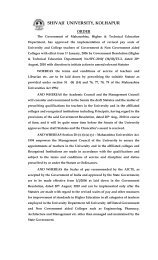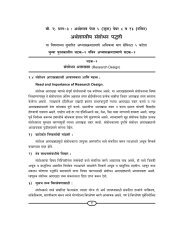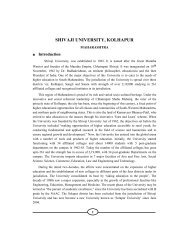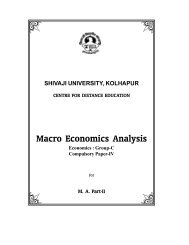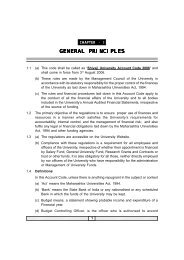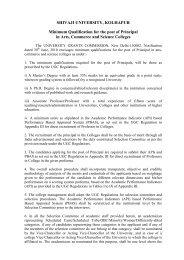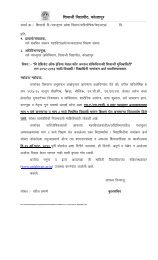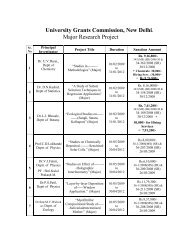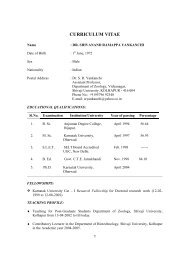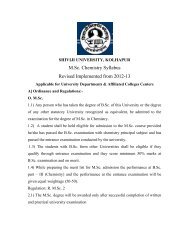Economics(Paper-4) - Shivaji University
Economics(Paper-4) - Shivaji University
Economics(Paper-4) - Shivaji University
You also want an ePaper? Increase the reach of your titles
YUMPU automatically turns print PDFs into web optimized ePapers that Google loves.
consider the possibility of the capitalist sector selling its product to subsistence sector.<br />
If it happens, the growth process may come to an end through unfavourable terms of<br />
trade or the subsistence sector adopting new techniques of production to meet<br />
expanding raw material demand of capitalist sector.<br />
5. Migration is not easy task:<br />
Labour migration is very difficult to migrate from subsistence to capitalist sector.<br />
The labourers have so deep affection for land and homes that they can’t think of leaving<br />
them. Therefore, in underdeveloped countries, there are socio-cultural barriers to<br />
occupational and geographical mobility which hinder the migration.<br />
Despite of these critics, the utility of Lewis model is important in the process of<br />
economic development. It explains the role of capital formation in Less Developed<br />
Countries where labour is surplus and capital is scarce.<br />
2.2.3 Rodan’s Theory of Big Push<br />
Paul N. Rpsemsteom Rodan’s theory is based on the principle of big push or by<br />
the way of big investment for development in an underdeveloped country, so that it can<br />
make commendable progress and to overcome obstacles for development. The<br />
investment below a certain level will be a mere wastage and will not enable to economy<br />
to break the vicious circle of poverty.The process of development is not merely steady<br />
and smooth but it is associated with many ‘discontinuities’, ‘jumps and lumps’.<br />
Rosenstein Rodan quotes in this regard “There is a minimum level of resources<br />
that must be devoted to…..a development programme if it is easy to have any chance<br />
of success. Launching a country into itself sustaining growth is a little like getting<br />
areoplane off the ground. There is a critical ground speed which must be passed before<br />
the craft can become airborne….”<br />
The theory of big push is a modern version of an old idea of ‘external economies’.<br />
The concept ‘external economies’ was first given by Marshall. The idea of external<br />
economies can be illustrated with the help of an example. Suppose, there are two<br />
industries A and B. If industry A expands in order to overcome the technical divisibilities,<br />
it shall derive certain internal economies. It results in lowering the price for the product<br />
of industry A. If A’s output is used as input for industry B, the profit of A’s internal economies<br />
shall be passed on to B in the form of pecuniary external economies. Thus, “the profits<br />
of industry B created by the lower prices of factor A, will call for investment and expansion<br />
in industry B, one result of which will be an increase in industry B’s demand for industry<br />
A’s product. This, in turn, will give rise to profits and call for further investment and<br />
expansion of industry A.”<br />
In the economy there exist certain ‘indivisibilities’ or ‘non-appropriabilities’ which<br />
will hinder the occurrence and transmission of these external economies. These<br />
indivisibilities can be removed by the large dose of investment i.e. by big push only.<br />
123456789012345678901234567890121234567<br />
123456789012345678901234567890121234567<br />
123456789012345678901234567890121234567<br />
123456789012345678901234567890121234567<br />
23<br />
123456789012345678901234567890121234567<br />
123456789012345678901234567890121234567<br />
123456789012345678901234567890121234567<br />
123456789012345678901234567890121234567



